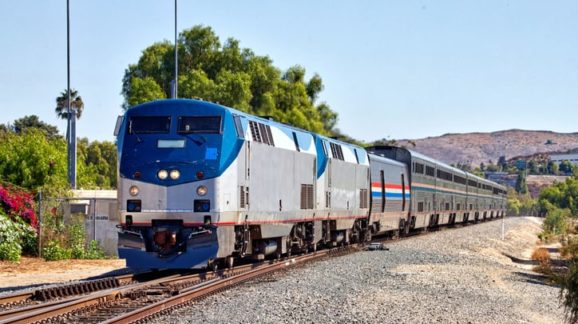Infrastructure Bill’s Non-Serious Nature Is a Serious Problem

Photo Credit: Getty
 America’s current surface transportation authorization, the FAST Act, expires at the end of September. Rather than reauthorizing it, however, House Democrats have introduced the INVEST in America Act (H.R. 2). While this bill stands no chance of becoming law, it exemplifies several problems with the current approach to lawmaking from the House.
America’s current surface transportation authorization, the FAST Act, expires at the end of September. Rather than reauthorizing it, however, House Democrats have introduced the INVEST in America Act (H.R. 2). While this bill stands no chance of becoming law, it exemplifies several problems with the current approach to lawmaking from the House.
First, it is a long litany of progressive desires and demands—over 1,000 pages’ worth, twice the length of the FAST Act. Nowhere is this better illustrated than in the section on Amtrak “reforms.” The reforms would turn Amtrak into a service run primarily for its employees’ benefit. For example, the FAST Act tried to stop Amtrak losing money on food and beverage service. The INVEST Act would instead bring all food and beverage services in house and almost guarantee a worse service at a higher cost. These reforms appear to be nothing more than putting the railroad labor unions’ demands into law. Customers, and especially taxpayers, are an afterthought.
Moreover, Amtrak will no longer be run by a board with business experience especially in transportation networks, who might raise difficult questions about the railroad’s viability, but by a board of people with “a record of support for national passenger rail service,” including representatives from labor unions and local government bureaucracy. The bill attempts to rig the system to prevent genuine and necessary reforms. Anyone who rode on British Rail in the 1970s will recognize the model and shudder.
Secondly, it dresses everything up in green fashion. The INVEST Act is clearly meant to be the transportation component of the Green New Deal. Mass transit gets far more increased investment than roads, even as it is becoming apparent that mass transit helped to spread the coronavirus, and ridership figures have crashed. As Bob Poole of the Reason Foundation has noted, despite the enormous amounts of money the bill pours into its environmental aspects, it is highly unlikely to achieve its environmental goals. Returning to Amtrak, he points out that, “If Congress really wanted to make transportation greener, it would provide more incentives for electric vehicles and encourage intercity buses to take Amtrak’s place on the vast majority of its diesel-powered routes.”
Finally, because the bill is simply a litany of demands it currently has no chance of being voted into law. In that respect, it is performative, signaling intent to interest groups, rather than a serious answer to the various surface transportation dilemmas America faces. Moreover, it mandates various standards in a fashion that would be familiar to anyone who followed the passage of Dodd-Frank in 2010. This comes at a time when there has long been bipartisan agreement that performance-based standards are the best way to manage transportation regulation—see this letter in support of a much better approach, which has been introduced as an amendment by Rep. Ted Budd (R.-NC). As such, the bill signals an intent to retreat into long-discredited approaches to surface transportation.
In short, H.R. 2 is monstrous behemoth of a bill that would harm America’s surface transportation. However, it is also a likely harbinger of what lies in store in an America that rejects free markets and limited government.